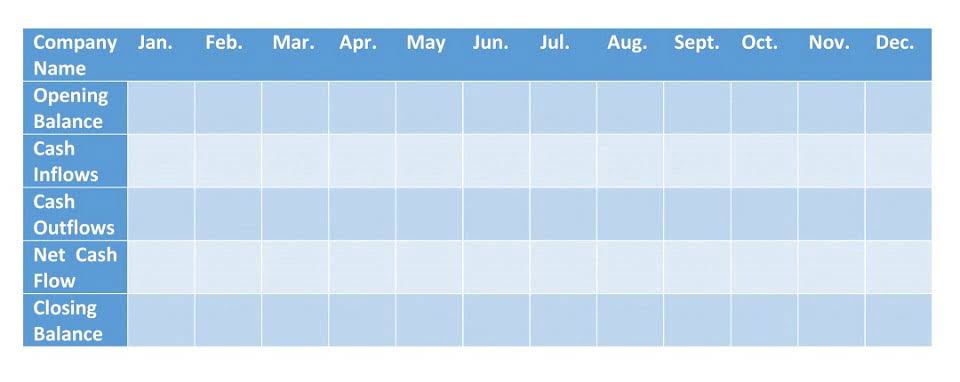What Is Unearned Revenue? A Definition and Examples for Small Businesses
Git, GitLab и Github: в чем разница? Компания PNN Soft
16. November 2022Back Office Systems The Backbone of the Trading Operations
23. Dezember 2022
You can have deferred revenue on the cash flow statement without income, you can also have income without inflows of cash. Current assets are receivables that a company will get within a year. Generally, they are transactional where money is exchanged for a service/good in real-time. For help creating balance sheets that can track unearned revenue, consider using QuickBooks Online.
How Revenue Recognition Works: A 5-Step Guide
It is usually listed under the current liabilities section, as it represents obligations that are expected to be settled within one year. Clear disclosure helps ensure transparency and accurate financial reporting for investors and other stakeholders. Unearned revenue does not initially appear on a company’s income statement. As the company fulfills its obligation to provide the goods or services, the unearned revenue liability is decreased, and the revenue is recognized on the income statement.
- So $100 will come out of the revenue account and you will credit your expense account $100.
- In accounting, unearned revenue has its own account, which can be found on the business’s balance sheet.
- In the eye of balance, having received payment in advance doesn’t mean a profit.
- For example, the real estate sector must navigate variable lease terms, tenant turnovers, and maintenance expenses.
- The amount of short-term debt as compared to long-term debt is important when analyzing a company’s financial health.
Suspense account definition
- Therefore, Beeker’s Mystery Boxes would record $240 as unearned revenue in their records.
- Now, let’s determine how unearned rent affects the overall financial scene.
- In other words, the revenue or sale is finally recognized and the money earned is no longer a liability.
- Here are some examples of unearned revenue in different kinds of businesses.
- You also need to enter a credit of $4800 to the deferred revenue account.
- At the end of the second quarter of 2020, Morningstar had $287 million in unearned revenue, up from $250 million from the prior-year end.
- The treatment of unearned rent revenue extends beyond the balance sheet and income statement, influencing a company’s tax obligations.
To stay compliant, entities must record unearned revenue as a liability on the balance sheet. This is done because the company has received payment for a product or service which has not yet been delivered or performed. The liability is reduced as the company fulfills its obligations, and the revenue is recognized in the income statement. Unearned revenue, also known as deferred revenue, is a crucial element in a company’s financial statements. It represents the money received by a company for goods or services that have not yet been delivered. When a company receives payment before rendering the service or delivering the product, it must recognize this receipt as a liability on its balance sheet.
What Is the Opposite of Deferred Revenue?

Like a well-crafted story, there are exceptions in the accounting world too. So, while the asset side of the equation brightens up, the liability side does too. Therefore, unearned rent does not impact equity until the obligation is fulfilled. In this situation, unearned means you have received money is unearned revenue a current liability from a customer, but you still owe them your services. However, even smaller companies can benefit from the added rules provided in the accrual system, so you may want to voluntarily work with accrual accounting from the start. Receiving money before a service is fulfilled can be beneficial.
Unearned Revenue: Decoding Its Significance in Business Accounting
These invoices are recorded in accounts payable and act as a short-term loan from a vendor. By allowing a company time to pay off an invoice, the company can generate revenue from the sale of the supplies and manage its cash needs more effectively. Unearned revenue is present across industries and business models. Here are some examples of unearned revenue in different kinds of businesses. However, since you have not yet earned the revenue, unearned revenue is shown as a liability to indicate that you still owe the client your services. Deferred revenue affects the income statement, balance sheet, and statement of cash flows differently.
- If you have noticed, what we are actually doing here is making sure that the earned part is included in income and the unearned part into liability.
- A prepayment adjusting entry would be noted on the books for January.
- Unearned revenue is originally entered in the books as a debit to the cash account and a credit to the unearned revenue account.
- Understanding why customers leave, using data and insights, is the first step to retaining them.
- Both the current and quick ratios help with the analysis of a company’s financial solvency and management of its current liabilities.
- Brace yourselves as we dive straight into why unearned rent is a liability.
In terms of financial statements, how is unearned revenue distinguished from deferred revenue?
Since you haven’t delivered on all the website support throughout the year yet, you should classify the support fee separately in your contract, and only recognize that revenue as you earn it. In this scenario, you need to use two sets of journal entries. Let’s look at how this works under the different accounting systems.
The Importance of Unearned Revenue
In short, a company needs to generate enough revenue and cash in the short term to cover its current liabilities. As a result, many financial ratios use current liabilities in their calculations to determine how well or how long a company is paying them down. Until you “pay them back” in the form of the services owed, unearned revenue is listed as a liability to show that you have not yet provided the services. In this article, I am going to go over the ins and outs of unearned revenue, when you should recognize revenue, and why it is a liability. Don’t worry if you don’t know much about accounting as I’ll illustrate everything with some examples.

For example, let’s say that two companies in the same industry might have the same amount of total debt. Accrued expenses are costs of expenses that are recorded in accounting but have yet to be paid. Accrued expenses use the accrual method of accounting, meaning expenses are recognized when they’re incurred, not when they’re paid. Below, we’ll provide a listing and examples of some of the most common current liabilities found on company balance sheets. Then, on February 28th, when you receive the cash, you credit accounts receivable to decrease its value while debiting the cash account to show that you have received the cash. If you have noticed, what we are actually doing here is making sure that the earned part is included in income and the unearned part into liability.
- Basically, ASC 606 stipulates that you recognize internally and for tax purposes revenue as you perform the obligations of your sales contract.
- Earned revenue means you have provided the goods or services and therefore have met your obligations in the purchase contract.
- Below, we’ll walk through how to record unearned revenue, how unearned revenue impacts financial statements and balance sheets, and examples of unearned revenue.
- Short-term debts can include short-term bank loans used to boost the company’s capital.
- In all three situations, the company has performed business activity.
- The Securities and Exchange Commission (SEC) oversees these rules and regulations to ensure proper disclosure and accurate representation of a company’s financial situation.
Income statement

If your business uses the cash basis of accounting, you don’t have to worry about deferred revenue. According to cash basis accounting, you “earn” sales revenue the moment you get a cash payment, end of story. Accrued revenue is income earned by a company that the company has not yet been paid for. Therefore, the company opens a receivable balance as it expects to get paid in the future.

